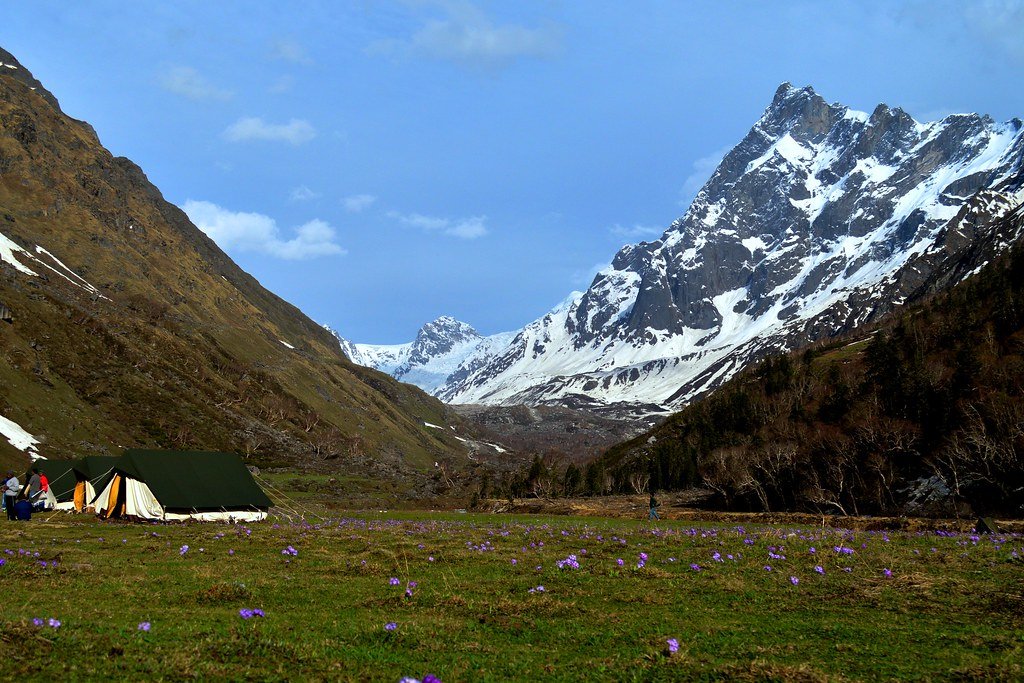Best Places To Visit In Gwalior | Complete Travel Guide | Best Time To Visit
Gwalior, a city in the heart of Madhya Pradesh, India, is a tapestry of history, culture, and architectural splendor. Dominated by the formidable Gwalior Fort, this ancient hill fortress narrates tales of Hindu and Mughal influence through its palaces, temples, and intricate carvings. Jai Vilas Palace, an opulent 19th-century marvel, echoes the city’s regal past with the Scindia Museum housing a treasure trove of artifacts. The Sas Bahu Temples showcase timeless beauty, while Tansen’s Tomb pays homage to the legendary musician. Gwalior is a harmonious blend of ancient charm and modern vibrancy, offering visitors a captivating journey through India’s cultural heritage.

Best Places To Visit In Gwalior:
Gwalior is a city that effortlessly weaves together a tapestry of rich heritage, architectural wonders, and cultural vibrancy. Perched on the northern fringes of the Malwa Plateau, Gwalior’s legacy traces back to the 8th century, and its most striking feature is the imposing Gwalior Fort that dominates the city’s skyline. This architectural masterpiece, situated on a sandstone hill, seamlessly incorporates Hindu, Muslim, and Jain styles within its walls, where palaces, temples, and water tanks unfold chapters of Gwalior’s storied past.
Here are some places to visit in Gwalior:
1. Gwalior Fort
Gwalior Fort, a commanding presence in the city of Gwalior, stands as a testament to centuries of history and architectural grandeur. Perched atop a hill, this ancient fortress boasts a formidable structure that reflects a fusion of Hindu and Mughal styles. The fort’s monumental gates lead to a complex housing palaces, temples, and water tanks. Notable structures within include Man Singh Palace, with its blend of Hindu and Islamic architecture, and the iconic Sas Bahu Temples adorned with intricate carvings. Gwalior Fort offers not only a panoramic view of the city but also a captivating journey through the layers of India’s rich cultural heritage.

2. Jai Vilas Palace
Jai Vilas Palace, located in Gwalior, Madhya Pradesh, is a magnificent 19th-century palace that epitomizes opulence and grandeur. Built by Maharaja Jayajirao Scindia in a blend of Italian, Tuscan, and Corinthian architectural styles, the palace is a testament to the regal legacy of the Scindia dynasty. Spread across acres of lush grounds, Jai Vilas Palace is adorned with ornate chandeliers, antique furniture, and an extensive collection of art and artifacts.
One of the main attractions within the palace complex is the Scindia Museum, where visitors can marvel at the world’s largest chandelier, exquisite silver furnishings, and an array of historical memorabilia. The palace provides a captivating glimpse into the lavish lifestyle of the Scindia rulers, making Jai Vilas Palace a must-visit destination for those seeking a taste of royal splendor in Gwalior.

3. Sas Bahu Temples
4. Tombs Of Tansen And Ghasu Mohammed
The Tombs of Tansen and Ghaus Mohammed, situated near the Behat Gate in Gwalior, are revered monuments steeped in musical and historical significance. Tansen, a legendary musician and one of the ‘Navaratnas’ in Akbar’s court, is buried here alongside his spiritual mentor, Ghaus Mohammed.
Tansen’s tomb, dedicated to the iconic classical musician, attracts music enthusiasts and pilgrims alike. The site symbolizes the enduring legacy of Tansen, who is credited with shaping and popularizing Hindustani classical music.
Ghaus Mohammed’s tomb, adjacent to Tansen’s, pays homage to the revered saint and teacher. Both tombs are simple yet culturally significant structures, reflecting the historical and cultural tapestry of Gwalior. 
5. Gujari Mahal Archaeological Museum
The Gujari Mahal Archaeological Museum, situated within the precincts of Gwalior Fort, is a cultural gem that unfolds the history of the region. Originally constructed by Raja Man Singh for his wife, Mrignayani (a Gujar princess), the Gujari Mahal now houses a significant archaeological collection.
The museum showcases an array of artifacts dating back to the 1st and 2nd centuries, providing insights into the rich cultural heritage of Gwalior. Exhibits include intricately carved sculptures, inscriptions, and ancient relics that offer a glimpse into the artistic and historical evolution of the area.
One of the notable displays is the renowned statue of Salabhanjika, an exquisite sculpture of a woman in a dancing pose. The Gujari Mahal Archaeological Museum stands as a cultural repository, inviting visitors to delve into the artistic brilliance and historical legacy of Gwalior and its surroundings.

6. Sun Temple

7. Man Singh Palace

8. Gopachal Parvat
Gopachal Parvat, located in Gwalior, is a sacred site renowned for its ancient Jain sculptures and carvings. Perched atop a hill within the Gwalior Fort complex, Gopachal Parvat is a significant pilgrimage destination for followers of Jainism.
The hill is dotted with a series of rock-cut Jain statues and images, dating back to the 7th to 15th centuries. The intricate carvings depict Tirthankaras, the revered Jain spiritual teachers, in various poses and forms. The sculptures showcase exquisite detailing and craftsmanship, offering a glimpse into the artistic and religious heritage of the region.

9. Sarod Ghar
10. Tigra Dam

11. Gurudwara Data Bandi Chhod Qilla Gwalior
Gurudwara Data Bandi Chhod Qilla in Gwalior holds historical significance associated with the Sikh faith. Situated within the Gwalior Fort complex, this Gurudwara commemorates the visit of Guru Hargobind Sahib, the sixth Sikh Guru. “Data Bandi Chhod” translates to “the liberator of prisoners,” and the Gurudwara is named in honor of Guru Hargobind Sahib’s release of 52 imprisoned Rajput kings.
The Gurudwara stands as a symbol of religious tolerance and freedom. The story goes that the Guru secured the release of the Rajput kings who were imprisoned in Gwalior Fort by negotiating with Emperor Jahangir. In gratitude, the kings requested that 52 turrets be added to the fort, symbolizing their freedom.

12. Bateswar Group Of Temples-Morena,Gwalior
The Bateswar Group of Temples, located near Morena, Gwalior, is a remarkable complex of ancient temples dedicated to Lord Shiva. These temples, dating back to the 8th to 11th centuries, exhibit exquisite Nagara-style architecture characteristic of the region.
Situated along the Chambal River, the Bateswar temples are known for their intricately carved sculptures and ornate spires. The complex consists of numerous shrines, each adorned with detailed carvings depicting various mythological scenes, deities, and celestial beings.
The serene and rustic setting of the Bateswar Group of Temples, combined with their architectural grandeur, attracts both devotees and tourists. The temples stand as a testament to the rich cultural and historical heritage of the Gwalior-Morena region, providing a glimpse into the artistic prowess of ancient Indian craftsmanship.

13. Teli Ka Mandir

15. Chattris Of Scindia Dynasty

16. Jiwajirao Scindia Museum

17. Pagara Dam

18. Gwalior Zoo
20. Madhav National Park

21. Bir Singh Palace,Datia
Bir Singh Palace, also recognized as Datia Palace, stands as a splendid fort-palace located in Datia city, Madhya Pradesh, India. Constructed by Raja Bir Singh Deo to host the Mughal Emperor Jahangir, this architectural marvel encompasses seven floors and perches atop an isolated rock on the city’s western side. A captivating blend of Mughal and Rajput architecture defines the palace, making it the grandest among the 52 palaces erected by Raja Bir Singh Deo. Its imposing presence is easily discernible from a considerable distance, showcasing the magnificence of this historical gem.

22. Mitavli And Padhavli
Mitavli and Padhavli, two quaint villages in close proximity to Gwalior, Madhya Pradesh, India, offer unique glimpses into the region’s historical and architectural heritage. Perched on a 100-feet high hillock, Mitavli boasts a splendid round temple constructed by the Kachhapghatas during the 10-11th century A.D. On the other hand, Padhavli, positioned approximately 33 km from Gwalior along the Malanpur – Morena road, is part of a historical trio, including Batesara and Padavali, all within 5 km of each other in Morena District. These locales, along with Bateshwar, form a constellation of beautiful historical sites, providing enriching experiences for those exploring the vicinity of Gwalior.

23. Phool Bagh
Phool Bagh is an enchanting garden with a rich history. Established by Madhava Rao Shinde, the former Maratha ruler, the garden was inaugurated by the Prince of Wales in 1922 during his visit to India. This expansive garden complex encompasses a residential palace, a museum, and various other buildings.
Within the Phool Bagh premises, visitors can explore not only the lush greenery but also the Gwalior Zoo, a museum, and places of worship such as a gurudwara, temple, and mosque. The garden serves as a prominent public park, cherished by the citizens of Gwalior for its tranquil ambiance, making it a popular choice for morning walks. With its historical significance and diverse attractions, Phool Bagh stands as a captivating destination in Gwalior.

24. Roop Singh Stadium
Roop Singh Stadium, located in Gwalior, Madhya Pradesh, India, is a renowned cricket stadium with a rich history. Established in 1978, the stadium is named after the legendary Indian cricketer, Roop Singh. Over the years, it has hosted several domestic and international cricket matches.
One of the notable features of Roop Singh Stadium is its unique pitch, known for its unpredictable behavior, challenging both batsmen and bowlers. The stadium has witnessed memorable cricketing moments and has been a significant venue for regional and national-level tournaments.

25. Kuno National Park

These were some places to visit in Gwalior. Hope you liked it. Have a safe journey!
How To Reach Gwalior From Delhi:
There are several ways to reach Gwalior from Delhi, considering the distance of approximately 360 kilometers. Here are the common modes of transportation:
- By Air:
- The nearest airport to Gwalior is the Gwalior Airport (IATA: GWL), which is well-connected to Delhi’s Indira Gandhi International Airport (IATA: DEL).
- Flights may not be as frequent as trains, so it’s advisable to check the flight schedules and book accordingly.
- By Road:
- Gwalior is accessible by road from Delhi via the National Highway 44 (NH44). The journey by road takes around 6-8 hours, depending on traffic and the mode of transportation.
- Buses, both government and private, operate between Delhi and Gwalior. You can choose from regular buses or opt for more comfortable options like Volvo or AC buses.
- By Car:
- Driving from Delhi to Gwalior is another option. The journey by car provides flexibility, and you can take the Yamuna Expressway and National Highway 44.
- It’s advisable to check the road conditions and plan breaks as needed during the journey.
- Tourist Trains (Seasonal):
- Depending on the season, there might be special tourist trains or charters operating between Delhi and Gwalior. These can offer a unique and scenic travel experience.
- By Train:
- Gwalior is well-connected to Delhi by train. The Gwalior Junction (station code: GWL) is a major railway station with regular trains running between Delhi and Gwalior.
- Trains like the Gatimaan Express, Bhopal Shatabdi Express, and more provide convenient and relatively fast options for travelers.
Here is a table of some trains running from Delhi to Gwalior, along with their name, number, timing and fare according to class.
| Train Name | Train Number | Departure Time | Arrival Time | Duration | Fare (in INR) |
|---|---|---|---|---|---|
| Vande Bharat Exp | 20172 | 14:40 | 17:45 | 3h 5m | 1A: 1,540; EC: 1,050 |
| Gatimaan Exp | 12050 | 08:10 | 11:07 | 2h 57m | CC: 1,005; EC: 1,495 |
| Rajdhani Express | 22222 | 16:55 | 20:08 | 3h 13m | 1A: 2,220; 2A: 1,315; 3A: 955 |
| Bhopal Shatabdi Exp | 12002 | 06:00 | 09:23 | 3h 23m | CC: 1,005; EC: 1,495 |
| Karnataka Sampark Kranti Express | 12650 | 08:20 | 11:43 | 3h 23m | 1A: 1,540; 2A: 900; 3A: 620; SL: 230 |
| Andhra Pradesh Express | 20806 | 20:00 | 23:43 | 3h 43m | 1A: 1,540; 2A: 900; 3A: 620; SL: 230 |
| Shaan E Bhopal SF Exp | 12156 | 20:40 | 00:24 | 3h 44m | 1A: 1,540; 2A: 900; 3A: 620; SL: 230 |
| Gondwana SF Exp | 22182 | 17:45 | 21:30 | 3h 45m | 2A: 900; 3A: 620; SL: 230 |
| Kerala Express | 12626 | 20:10 | 00:03 | 3h 53m | 1A: 1,540; 2A: 900; 3A: 620; SL: 230 |
| Telangana Express | 12724 | 16:00 | 19:58 | 3h 58m | 1A: 1,540; 2A: 900; 3A: 620; SL: 230 |
I hope this table helps you. If you want to know more details about any train, you can visit official website of indian railway – IRCTC 😊
Best Time To Visit In Gwalior:
The prime time to explore Gwalior is during the winter months from October to March, characterized by cool and comfortable weather with daytime temperatures ranging from 10°C to 25°C. This period is highly recommended for visiting the city’s historical monuments and outdoor attractions, such as the renowned Gwalior Fort and palaces. Conversely, the summer months of April to June bring scorching temperatures exceeding 40°C, making outdoor activities less enjoyable.
Nearby Places To Gwalior:
Sure, I can help you with that. Here is a table of some nearby places to Gwalior along with their distance from the city:
| Place | Distance (in km) |
|---|---|
| Tighra Dam | 24 |
| Bateshwar Temple | 31 |
| Padmavati Pawaya | 35 |
| Orchha | 120 |
| Madhav National Park | 120 |
| Jhansi | 103 |
| Chanderi | 220 |
| Khajuraho | 275 |
I hope this helps you plan your trip. Have a great time! 😊








